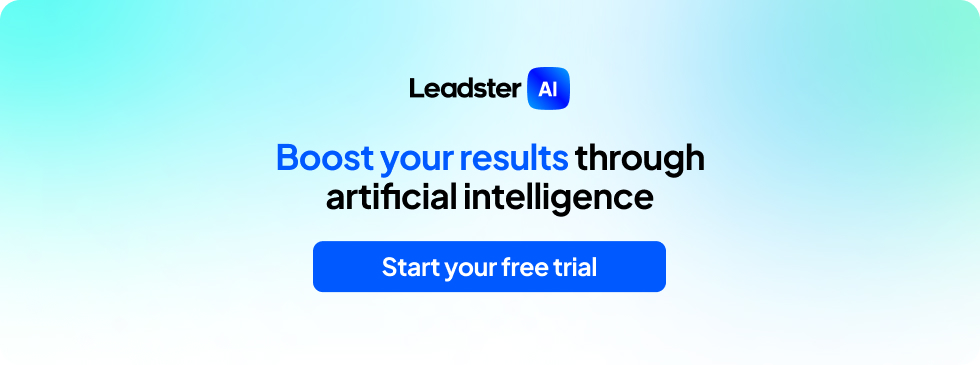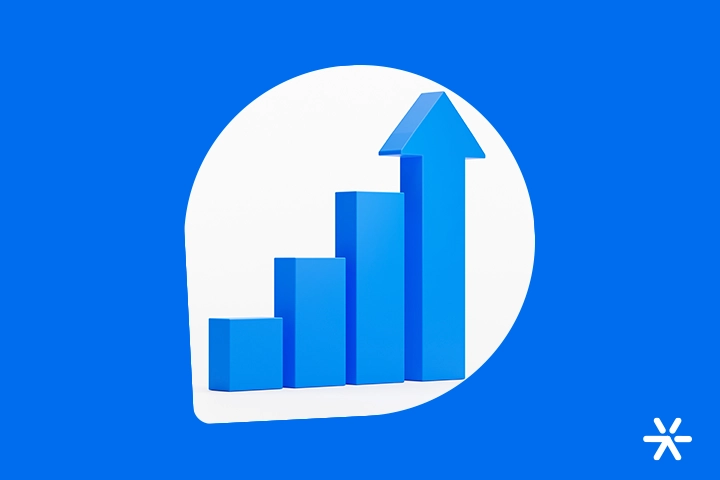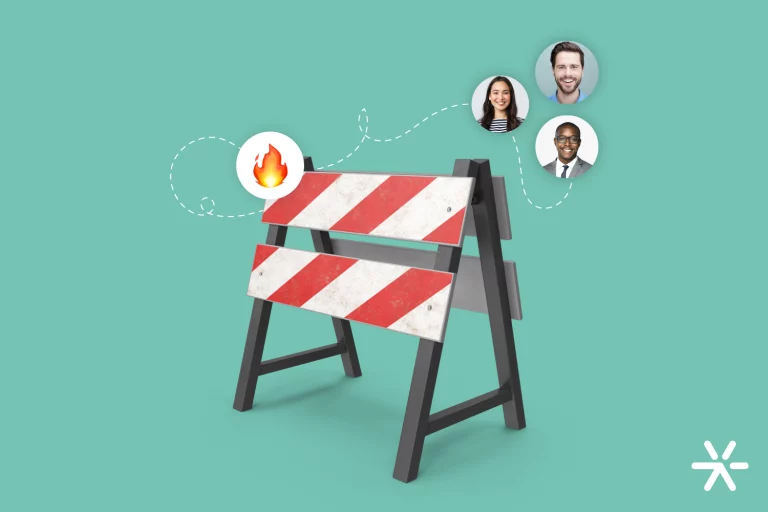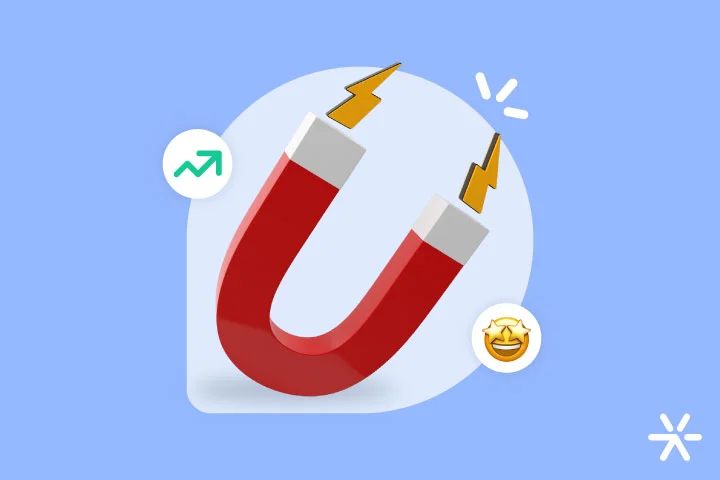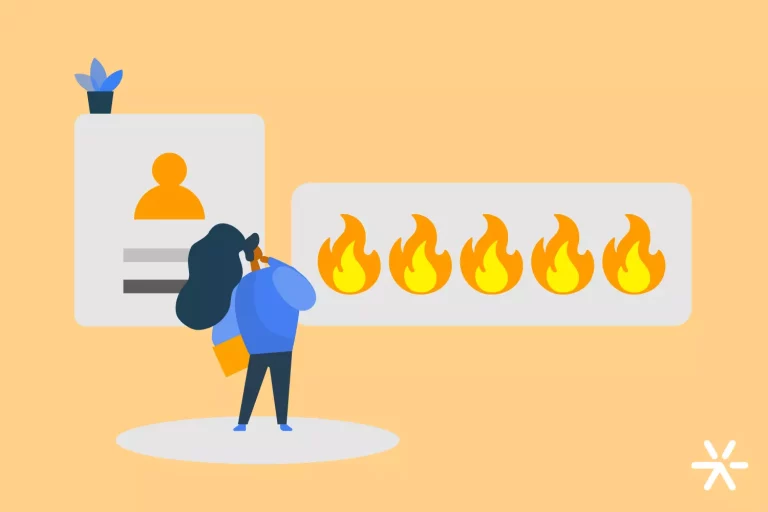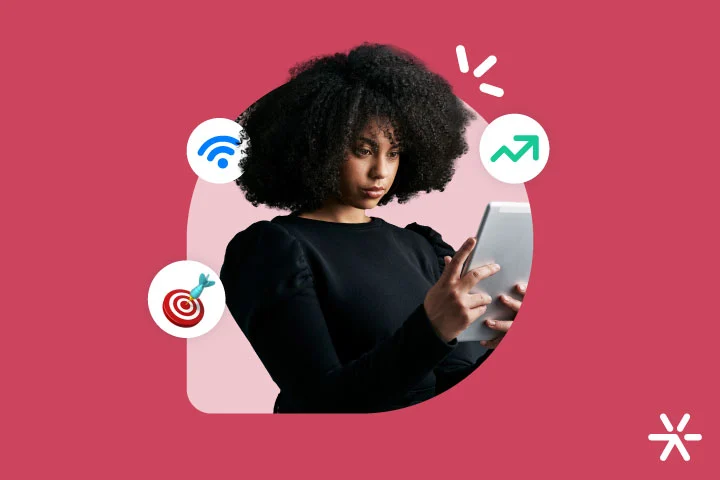B2B Sales: A Guide to Accelerate Your Business + 7 Digital Marketing Insights
The most popular strategies for B2B lead generation and sales had to be rethought after the social isolation period we experienced and the acceleration of digital tools in recent years.
Want to bring digital strategies to your B2B brand? Then check out this article with 7 tips and a handful of insights on B2B digital marketing to guide you and your company through the sales process!
What’s the Difference Between B2B and B2C?

Companies are classified as B2B or B2C based on their target audience.
A B2C (Business to Consumer) company sells directly to the end consumer, with no intermediaries. If a brand sells to another company, it falls under the B2B (Business to Business) model.
Main Characteristics of B2B Sales
B2B sales involve buyers with strategic motivations, behaviors, and goals that differ from those of final consumers.
A B2B buyer is a professional purchasing on behalf of a company, so they must align their decisions with the company’s needs.
This type of negotiation is usually more competitive and requires greater technical knowledge to assess quality standards.
More Than One Decision-Maker
We’re talking about high-value contracts and bureaucratic processes that follow each buyer company’s internal policies. Therefore, it’s rare for a B2B deal to be closed by a single person. The decision is made collectively by a team acting on the company’s behalf.
A study published by Harvard Business Review (HBR) shows that, in B2B sales, an average of 5.4 people must formally sign off on a purchase or service contract.
Thus, one of the main challenges in B2B sales is achieving consensus among all stakeholders and decision-makers.
According to that same HBR report, many vendors focus on proving they’re the best option, when they should be helping decision-makers find the best solution together.
More Reason, With a Dash of Emotion
Google partnered with the Marketing Leadership Council of CEB to research whether emotions play a role in B2B decision-making, challenging the common belief that B2B negotiations are purely rational.
The results may surprise you:
“B2B brands generated stronger emotional connections than B2C brands, which didn’t even come close to B2B’s results. Of the hundreds of B2C brands studied by Motista, most had emotional connections with only 10% to 40% of consumers.
Meanwhile, of the nine B2B brands studied, seven surpassed the 50% mark. On average, B2B clients are significantly more emotionally connected to their vendors and service providers than consumers are.”
We often forget that decisions are made by people—people who navigate interpersonal relationships and emotions, even at work.
Given the higher risks and longer negotiation cycles, corporate clients are more likely to purchase when they not only feel confident in the offer but also emotionally connected to the supplier.
Consultative Selling Approaches
As the name suggests, the consultative approach is like offering a consulting service to the client. The salesperson also acts as an advisor by analyzing the company’s needs.
Unlike the traditional approach, where the salesperson focuses only on closing the deal without understanding the client’s real issues, the consultative method involves working closely with the lead to understand their problems and needs—then collaboratively deciding on the most suitable product or service.
That’s why you should gather detailed information about the prospective company before initiating contact.
Longer Sales Cycle
The consequences of choosing an unreliable supplier or receiving low-quality deliverables are too significant to justify a quick decision.
Contracts are only signed after the buyer is fully confident, which means impulsiveness has no place in B2B buying. As a result, the sales cycle tends to be much longer before a prospect converts into a client.
Higher Average Ticket
B2B sales usually involve higher profit margins and average ticket values. Therefore, standing out in this sector is crucial for companies that sell to other businesses and want financial success.
According to a report by the American business consultancy Frost & Sullivan, B2B transactions reached a value of $3 trillion by 2020.
Longer Contracts
Due to their complexity, B2B contracts often last longer. Companies don’t have time to repeat the procurement process every time a new need arises.
This is one of the advantages of B2B sales. Once you establish a long-term contract, it’s more likely to be renewed—if demand continues and your service delivery is satisfactory.
Recurring Revenue
B2B purchase and sales contracts often involve recurring purchases, typically with monthly payments for a defined period.
This benefits the supplier, who can predict cash flow more comfortably—especially with long-term agreements.
How Does the B2B Sales Process Work?

Now that you know the characteristics of B2B sales, it’s time to understand how the step-by-step process works.
Let’s walk through the entire journey below:
Step 1: Define Your Ideal Customer Profile (ICP)
You can’t sell to an audience you don’t know or can’t confirm is a good fit for your business.
Before doing any digital marketing or sales action, your company must define its Ideal Customer Profile (ICP). In other words, what kind of company makes sense as your client?
Conduct market research to find out where your customers are, what their characteristics are, how to approach them, and what common problems they face.
Step 2: Lead Prospecting
Now that you’ve defined your ICP, where can you find these potential clients? And once you do, how should you approach them?
To prospect leads, your company can participate in industry conferences, events, and trade shows—investing in Outbound Marketing through physical and digital ads, such as TV and radio commercials, banners, display ads, billboards, newspaper and magazine ads, pop-ups, and more.
Another option is to use social networks like LinkedIn to find profiles that match your brand.
Learn more: Inbound vs. Outbound — Which Is the Best B2B Sales Strategy?
Step 3: Lead Qualification and MQL/SQL Definition
Great, the leads—your potential clients—are arriving. Now what?
Receiving unqualified leads (those with little to no chance of converting) only wastes your time and lowers your conversion rate.
You need to segment and profile your leads. Consider factors like job title, company size, level of interest, available budget, decision-making power, urgency, and competitor engagement. That way, you’ll know the right time to approach each potential client.
From this qualification process, you’ll be able to classify leads as MQLs or SQLs. Here’s what they mean:
- MQL (Marketing Qualified Lead): These leads are aware of their problem and understand the type of solution they need. However, they’re not yet considering specific brands and require further nurturing.
- SQL (Sales Qualified Lead): These leads are closer to making a purchase. They’ve already chosen the type of solution your company offers and are likely evaluating brand options. SQLs should be handled by the sales team because they’re more open to negotiation.
To help with this stage, we’ll share a few question-based methods from our experts that you can use to qualify your leads.
BANT
- Budget: the lead’s investment budget.
- Authority: the decision-making power regarding the purchase.
- Need: the difference your solution makes in the lead’s pain point.
- Timeline: how long the lead needs to decide on the purchase or the urgency in solving the problem.
ANUM
- Authority: understand the decision-maker’s profile and their interest in the solution.
- Need: assess whether your solution meets the lead’s needs.
- Urgency: determine how much the lead prioritizes solving the need or problem your solution addresses.
- Money: verify if the budget matches.
PACT
- Pain: get the lead to reflect on their problem.
- Authority: understand the relationship and impact of the issue.
- Consequence: point out the negative impacts of not solving the issue, such as costs, time, productivity, organization, etc.
- Target Profile: identify the lead’s profile and any limiting factors preventing them from becoming a customer.
Step 4: Diagnosis
At this point, your sales team has gathered enough information to better understand the interested company’s pain points and consider the best solution.
A CRM tool is essential for this stage. It helps organize your leads and cross-check all collected data, making the diagnosis process—i.e., determining the best alternative to the client’s problem—more straightforward and effective.
Focus on getting to know the interested company even more, learn all the details about the problem they’re facing, and use this opportunity to solidify your relationship with them.
Step 5: Decision-Making
Great! Your lead agreed with your diagnosis and closed the deal with your company!
But does this mean the process ends here? Absolutely not.
B2B sales demand a bit more bureaucracy. That’s why the following stages require extra attention, and your sales team must be aligned with the finance department.
Step 6: Contract Signing
To sign the contract, you’ll need to address several client-related points, such as clearing up any doubts, running a credit check, and reviewing the order’s billing.
If necessary, schedule a meeting with the client to align expectations and eliminate any miscommunication.
Step 7: Follow-Up, Support, and Customer Success (CS)
Okay, your company made a sale—does that mean you no longer need to contact the client?
Again, no!
Follow-up, customer support, and Customer Success (CS) are just as important as any other stage of the B2B sales cycle. So maintain your relationship with the client and be available for any questions or issues.
This way, client companies feel more valued and supported.
Also read: How to Control Your Company’s Churn Rate – Complete Guide
What About the B2B Sales Funnel?
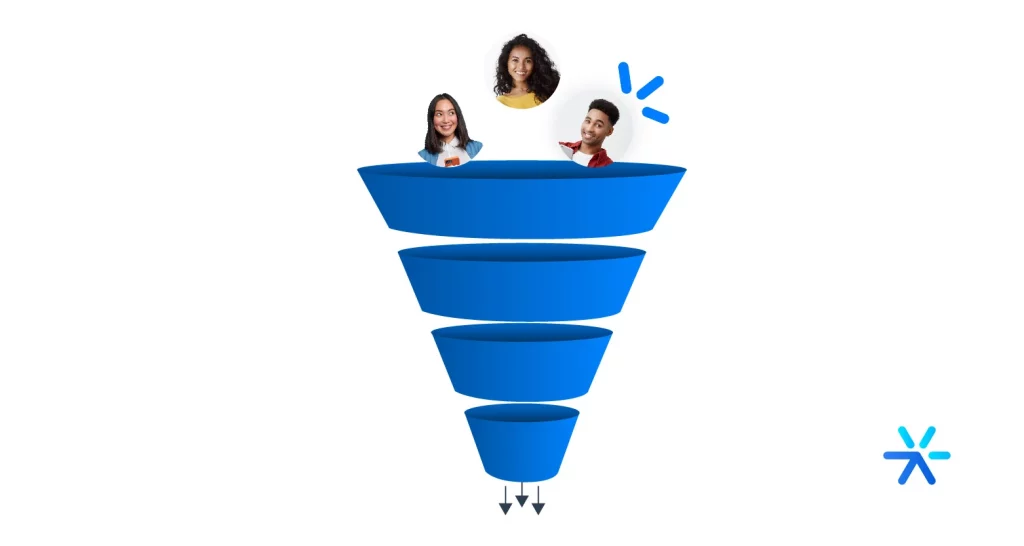
The Sales Funnel is a visual representation of your customer’s journey. It includes:
- Top of the Funnel: learning and discovery stage.
- Middle of the Funnel: when the problem is recognized and a solution is considered.
- Bottom of the Funnel: when the client evaluates diagnoses and makes a purchase decision.
In B2B marketing, in addition to the traditional sales funnel, we also work with three additional types:
- Sales Funnel Focused on Converting Qualified Leads – This funnel is used to convert your qualified leads into customers. To do this, your company must reach out (even multiple times, if needed), schedule a meeting, conduct a diagnosis, send a proposal, negotiate, and ultimately close the sale.
- Sales Funnel Focused on Lead Nurturing – Here, you shouldn’t be too direct, as the lead isn’t yet fully convinced about your business. Instead, you need to nurture them—share rich, informative content that helps them move further down the funnel.
- Sales Funnel Focused on Decision-Making – B2B products/services are often complex, making client decision-making more difficult. In this case, your funnel should focus entirely on explaining the product, answering questions, sending success stories, and using all strategies that help clarify and ease the purchasing decision.
Also read: 30 Lead Generation Statistics You Need to Know

7 Best Digital Marketing Strategies for B2B Sales
B2B sales: a competitive and profitable market. So standing out and creating business opportunities is essential. This applies to every company, and B2B brands are no exception.
Here are 7 strategies currently gaining ground due to their effective results, all leveraging the power of digital marketing:
1. Paid Media & Remarketing
Remarketing brings visitors back to your website or other pages to complete the desired conversion. Paid media, when aligned with remarketing strategies, can drive strong results in the B2B sector.
Create ads and run tests—apply the most effective ones, and don’t redirect visitors to the same conversion page or message they already encountered.
If the conversion didn’t happen the first time, don’t expect it to work by repeating the same strategy.
2. Conversational Marketing
If you’re looking to increase both the volume and quality of your leads, Conversational Marketing is worth exploring.
Aligned with current digital trends, it uses tools like chatbots and virtual assistants to speed up decision-making, personalize conversations, and be available 24/7.
3. Content Marketing
Content Marketing is also effective for B2B strategies when properly implemented.
Identifying both influencer personas and decision-maker personas is crucial to understanding your target audience’s behavior in their research journey.
Some are just seeking information, others want to understand the solution better, and some are already comparing purchase options.
This insight makes keyword research more effective and ensures your content marketing has a real impact on brand visibility and lead generation.
4. Referral Marketing
Your best brand ambassadors are happy customers. Referral Marketing focuses on turning those clients into organic promoters of your solution. After all, people trust personal recommendations.
In B2B, the habit of looking for referrals is even more common than among consumers: 84% of B2B sales start with a referral.
Yet, 54% of B2B companies don’t have a referral marketing strategy.
5. Account-Based Marketing (ABM)
ABM focuses on selecting specific accounts (target companies) and creating highly personalized marketing and sales campaigns to convert them.
Because of its precision, 97% of companies using ABM reported a higher ROI, according to Altera Group.
6. Branding
Don’t underestimate the importance of branding in B2B.
Many companies neglect it, thinking it doesn’t matter as much as it does in B2C. But that mindset can hurt your chances in a competitive market full of suppliers.
The brands with greater visibility and brand recall usually win over those that ignore branding.
7. Virtual Events
In-person events have always played a key role in B2B sales relationships and lead generation. But during social distancing, virtual events became the norm.
Even before that, the trend was already emerging—but the recent context accelerated it.
Virtual events now help B2B brands increase visibility, build communities, promote key figures, and generate leads that can later be nurtured and qualified.
Other B2B Marketing and Sales Insights in 2023

Looking for even more strategies for the B2B sales sector? Here are a few additional insights:
Mobile is Gaining more Ground in B2B…
As we’ve seen, interpersonal relationships have an impact on sales negotiations, and in this context, the type of relationship built has changed in recent years.
Today, 50% of B2B searches are conducted via mobile devices, as B2B customers no longer expect to find solutions only through events, sales meetings, or phone calls.
Today’s consumers—whether individuals or businesses—seek convenience, speed, and satisfying digital experiences.
Videos Remain Strong
Incorporate videos into your marketing and communication strategy—even in B2B. Videos offer quick and educational consumption, and are already used by 86% of companies as a marketing tool.
Social Media is Also a Place for B2B
B2B companies often make the mistake of neglecting social media, assuming that this type of platform doesn’t impact brand-to-brand sales.
In addition to missing out on opportunities for engagement with the audience that follows their pages, these companies overlook a key factor: social media activity also influences page rankings in search engines like Google.
Transparency and Trust in the Salesperson
Salespeople often carry a negative reputation in the market. While this perception doesn’t apply to all professionals, it does exist.
In the B2B market, due to higher risks and investment amounts, trust in the salesperson plays an even greater role. Even with the rise of online tools, 70% of business buyers want to speak with a sales representative at some point in the buying process.
However, only 8% say they actually trust the rep who serves them. This insight is crucial for implementing initiatives that build and strengthen the brand’s credibility and trust in its representatives.
Salespeople are increasingly present in the digital world
As everything moves into the digital space, sales are no exception.
That’s why it’s essential for sales reps to be part of the digital experience, rather than serving as just a backup contact option.
Brent Adamson, VP at Gartner (a global research and consulting firm), addressed this topic in his most recent conference for commercial leaders:
“B2B sales in today’s world must be both digital and human. A carefully designed and highly engaging digital experience, where you are guided by a salesperson—not simply handed off to one within the funnel. In other words, instead of choosing between engaging customers through sales reps or digital channels, the best companies are exploring how to engage customers through both simultaneously.”
— Source: Gartner – B2B Sales Must Focus on Seller-Assisted Digital Experiences
By being more present in the digital sphere, salespeople can help customers make sense of the overwhelming volume of information online, guiding the purchasing process in a consultative manner.
Important Tools to Boost the Quality and Volume of B2B Sales

B2B sales carry an added layer of complexity—but that doesn’t mean there aren’t ways to automate or optimize the process.
So here are four tools that will help you improve your sales process:
CRM
In the section “How B2B Sales Work – Step 4: Diagnosis” of this article, we already talked about the importance of CRM software for your business.
Some of the best CRM tools on the market include:
- Fleeg
- Ploomes
- RD Station CRM
To learn more, check out our article: 11 Best Sales CRM Software in 2023!
Marketing Automation
Digital marketing is essential for B2B sales, which is why a marketing automation tool can streamline your entire planning and execution process.
With it, you can qualify your leads and engage with them more easily. Here are a few options:
- Leadlovers
- Sendinblue
- RD Station
Process Management
Nothing benefits your company more than software that helps with the management of organization, tasks, goals, strategies, and objectives.
Top tools in the market include:
- Trello
- Asana
- Jira
- Basecamp
- Contentools
Chatbots
There are many types of chatbots. But a sales chatbot can automate and enhance the support on your site while also capturing, qualifying, and nurturing leads.
Some of the top sales chatbots today include:
- Leadster
- Octadesk
- Drift
Want to know more options? Check out our article: Meet the Best Chatbots on the Market to Use in 2023!
Also read: How to Reduce Lead Response Time to Increase Sales and Customer Satisfaction
Conclusion
With the right B2B marketing and sales strategies, it’s possible to achieve real results through digital channels and multiply your business outcomes by leveraging the tools that digital marketing can offer.
And there’s more! If you enjoyed this content, come learn how B2B companies are receiving more qualified quotes and significantly increasing their sales—right here with Leadster!
